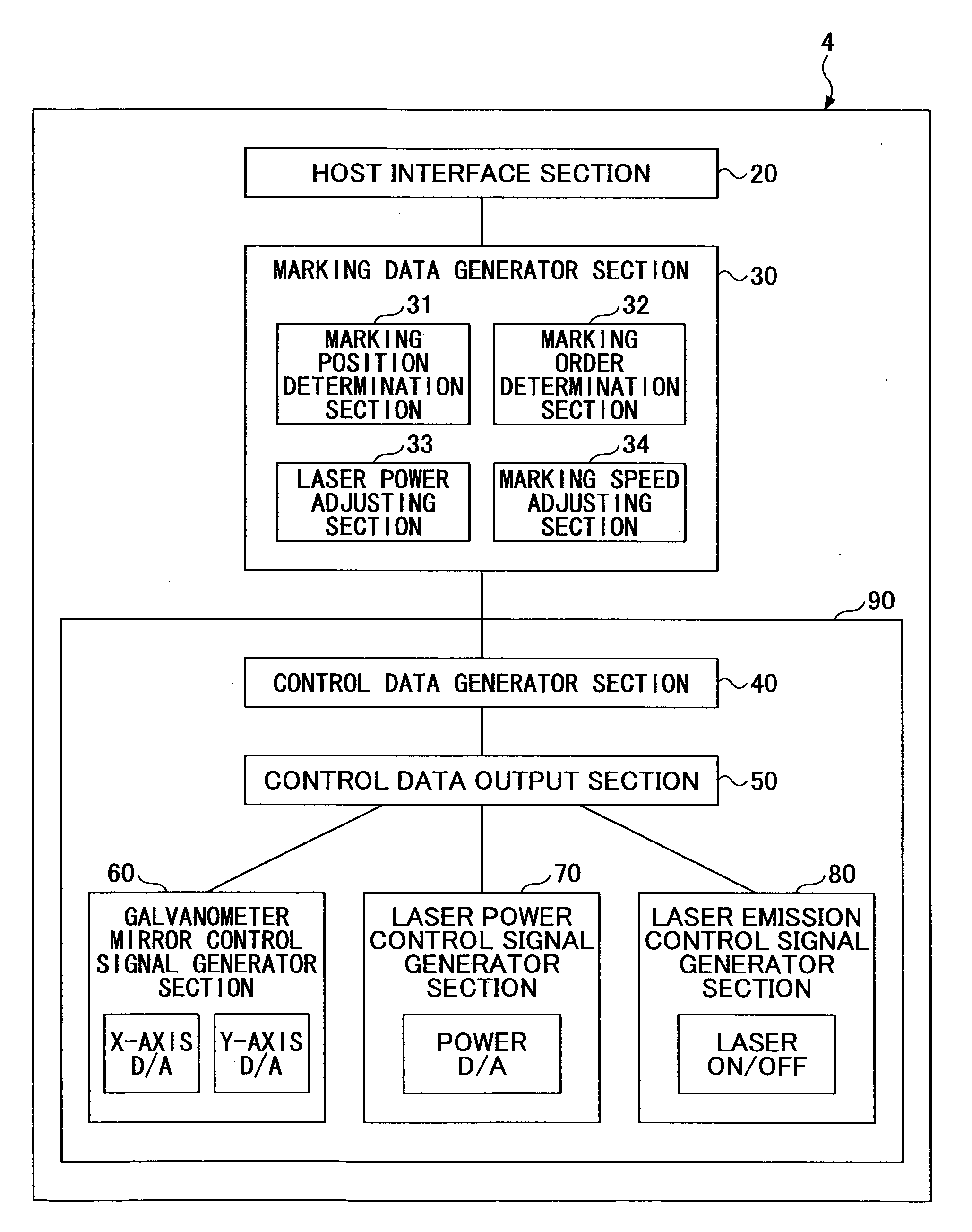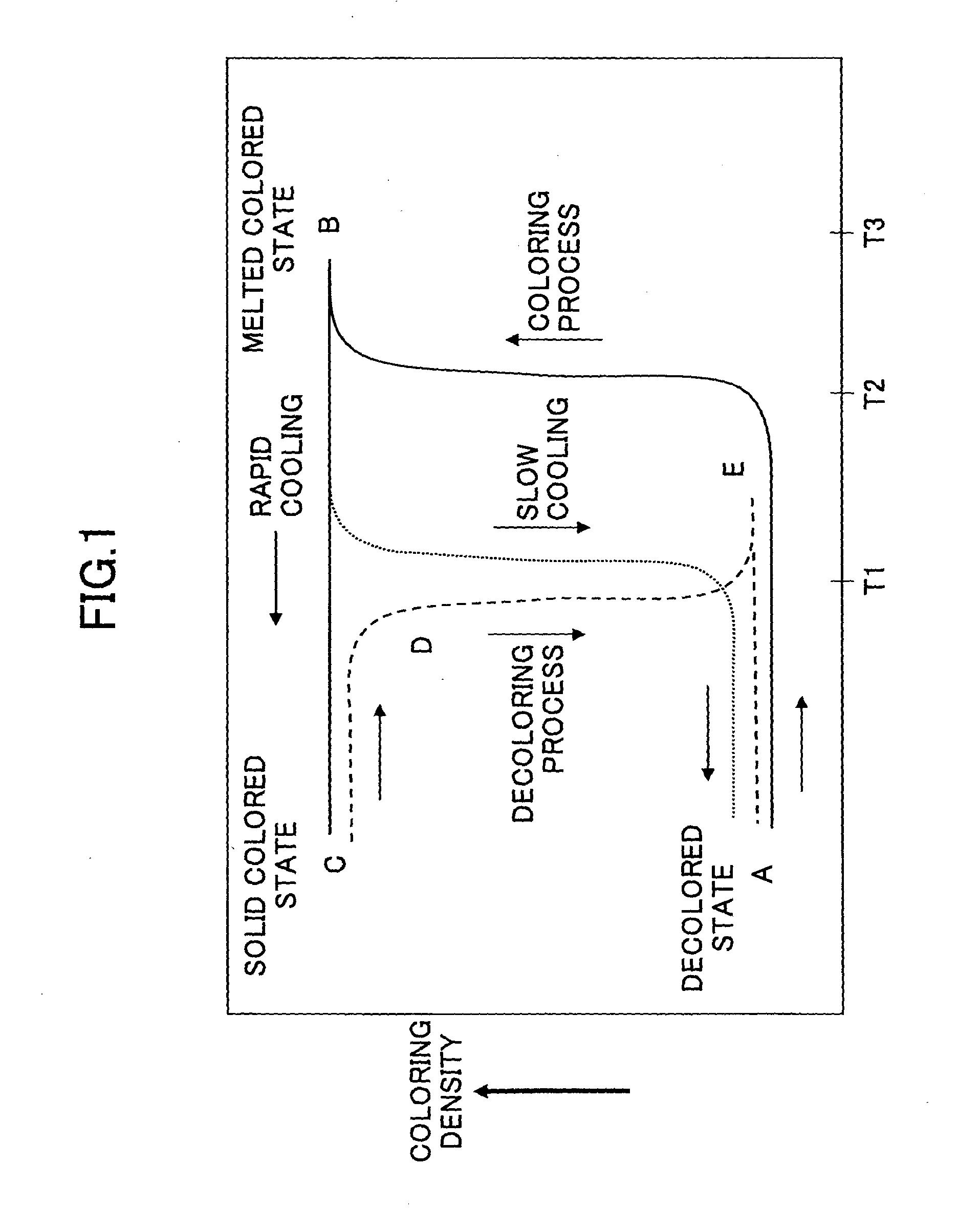Marking control device, laser application device, marking control method, and computer-readable recording medium having marking control program
- Summary
- Abstract
- Description
- Claims
- Application Information
AI Technical Summary
Benefits of technology
Problems solved by technology
Method used
Image
Examples
first embodiment
[0091]FIG. 6 is a configuration diagram illustrating a laser application device 1 according to a first embodiment. The laser application device 1 according to the first embodiment includes a laser device 2 configured to emit a laser beam, a scanner device 3 configured to scan the laser beam emitted from the laser device 2 onto the thermoreversible rewritable medium 100, and a marking control device 4 configured to drive control components of the laser application device 1.
[0092]The laser application device 1 scans the laser beam on the rewritable medium 100 based on marking instructions received from an external host computer 200 to mark a target image on the rewritable medium 100. The laser device 2 is configured to emit a laser beam based on an instruction received from the marking control device 4. The laser device 2 may be a semiconductor laser (i.e., a laser diode, LD) device, a YAG laser device, or a carbon dioxide gas laser device; however, the semiconductor laser (i.e., a la...
second embodiment
[0152]FIG. 14 is a configuration block diagram illustrating a marking control device 204 according to a second embodiment.
[0153]The marking control device 204 according to the second embodiment differs from the marking control device 4 according to the first embodiment in that the marking data generator section 30 of the marking control device 204 according to the second embodiment includes a marking position alteration section 235. Since the components of the marking control device 204 according to the second embodiment other than marking the position alteration section 235 are the same as those of the marking control device 4 according to the first embodiment, their descriptions are omitted by assigning the same reference numerals to the components same as those of the marking control device 4 according to the first embodiment.
[0154]FIGS. 15A, 15B, 15C are diagrams each illustrating a marking method based on marking data generated by the marking control device 204 according to the...
manufacturing example 1
Manufacture of Thermoreversible Recording Medium
[0366]A thermoreversible recording medium capable of reversibly changing its color with applied heat was manufactured as follows.
—Supporting Member—
[0367]A white polyester film having a thickness of 125 μm (Tetoron Film U2L98W; manufactured by Teijin DuPont Films Japan Limited) was used as a supporting member.
—Forming of First Thermoreversible Recording Medium—
[0368]Five parts by mass of a reversible developer represented by the structural formula (1), 0.5 parts by mass of a first decoloring accelerator represented by the structural formula (2), 0.5 parts by mass of a second decoloring accelerator represented by the structural formula (3), 10 parts by mass of a solution containing 50 mass % acrylic polyol (hydroxyl value=200 mgKOH / g), and 80 parts by mass of methyl ethyl ketone were ground and dispersed by a ball mill until they had a mean particle size of approximately 1 μm.
[0369]Next, one part by mass of 2-anilino-3-methyl-6-dibutyla...
PUM
| Property | Measurement | Unit |
|---|---|---|
| Wavelength | aaaaa | aaaaa |
| Time | aaaaa | aaaaa |
| Time | aaaaa | aaaaa |
Abstract
Description
Claims
Application Information
 Login to View More
Login to View More - R&D
- Intellectual Property
- Life Sciences
- Materials
- Tech Scout
- Unparalleled Data Quality
- Higher Quality Content
- 60% Fewer Hallucinations
Browse by: Latest US Patents, China's latest patents, Technical Efficacy Thesaurus, Application Domain, Technology Topic, Popular Technical Reports.
© 2025 PatSnap. All rights reserved.Legal|Privacy policy|Modern Slavery Act Transparency Statement|Sitemap|About US| Contact US: help@patsnap.com



